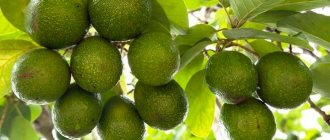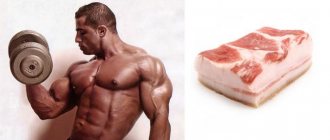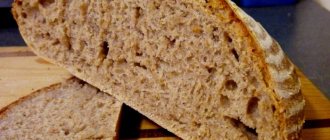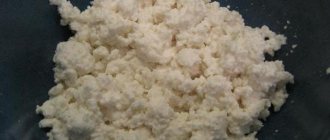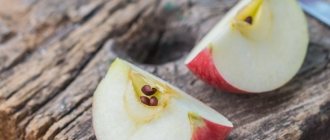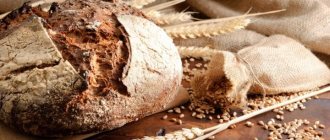Cottage cheese is considered one of the most useful and leading products with dietary characteristics. Cottage cheese is produced by fermenting milk using lactic acid bacteria and then separating the whey.
Prescribed as a prevention and therapy for various diseases.
Besides:
- It is an important source of protein, contains lactose, mineral elements, and carbon dioxide.
- The healthy curd contains vitamins A, C, D and group B, valuable elements such as iron, phosphorus, and calcium.
Cottage cheese - for pregnant women and children.
Phosphorus and calcium contained in this useful product have a positive effect on the formation of the human bone frame . That’s why growing children and pregnant women need it.
How to make cottage cheese
Usually cottage cheese can be made in several ways. Thus, there are two main types: traditional (classical) and separate production methods:
- Traditional production method.
It is divided into two subtypes: acidic and acid-rennet. In the first method, in order to provoke the coagulation process, sour milk is used, to which lactic acid is added. As a rule, skim milk is used. With the acid-rennet method, the use of sour raw materials is not required, since the fermentation process is caused by rennet and lactic acid. The enzyme significantly speeds up the production of the final product. - Separate production method.
This method is very convenient, as it allows you to prepare any type of cottage cheese that has the required fat content and consistency. To do this, the milk is subjected to a separation process to obtain cream and a fat-free substrate. Rennet is added to it, and then the resulting mass is mixed with the required amount of cream.
Cottage cheese can also be prepared at home:
- Pour 2-4 liters of milk into a saucepan and let it sour; to give the cottage cheese a slight sourness, you can put a spoonful of sour cream in the milk.
- After souring, the container with milk must be placed in a pan of water. It should be larger than the first one.
- Then place the pan on low heat; a yellow liquid will gradually release from the milk. The process must be closely monitored, so don’t go anywhere. After it appears, the container must be removed from the stove and left to cool in a cool place. When the mass reaches room temperature, it can be worked with.
- Now place the cooled mass on a sieve, previously lined with a double layer of gauze. Then tie the edges of the gauze, you should get something like a bag. It needs to be suspended so that the remaining whey must leave the product.
- Check the bags after 20 minutes. Everything left inside will be homemade cottage cheese.
Application
The unique taste of cottage cheese allows it to be used with both sweet and salty additives. Cottage cheese products with the addition of muesli, dried apricots, and raisins are very popular. Many centuries ago, our ancestors began baking cottage cheese, and as a result, delicious cheesecakes appeared. And, of course, cottage cheese can be consumed as a separate dish without any additives.
Market Analytics
- COVID-19 is changing the rules of the game in the cosmetics market
- Beauty of the future: cosmetic innovations 2020
- New ingredients are the driving force of the cosmetics industry
Convenient search for beauty salons on our website
Beauty salons in Moscow Beauty salons in St. Petersburg Beauty salons in Ekaterinburg Beauty salons in Novosibirsk
Latest blog posts on our website
- Naturecream / Wrinkles Puppets
- Naturecream / PEPHA-TIGHT - instant skin lifting
- Naturecream / Blue light - a danger to the skin
- Naturecream / Cocoa Butter – A treat for the skin
- Naturecream / Trylagen - supports the entire collagen life cycle.
- Naturecream / Spring skin rehabilitation
- Naturecream / Cleavage - a woman's passport
- Naturecream / Anti-cellulite “Memo”
- Naturecream / Peptides instead of beauty injections.
- Naturecream / Microplastics in cosmetics
Latest forum topics on our website
- Mrs._Smith / Badly sunburned! What to do?((
- Ice / Is it necessary to combine fitness classes with a diet?
- Antonova / What can be used for hair loss?
- Radio operatorKat / Who was on a protein diet?
- Suzanna / Mesotherapy on the face
Other articles in this section
| Buttermilk 0.5% Buttermilk is a low-calorie dairy product considered a by-product during the butter extraction process. Previously, to make fresh milk, it was necessary to thoroughly whisk it for a long time to obtain butter, and the liquid that remained was buttermilk. Buttermilk can have minimal fat content - only 0.5%. This is achieved by turning all the fat from the milk into butter. |
| White mold cheese White mold cheese is a French delicate cheese with a layer of mold on the surface. This cheese is a soft variety, it has a creamy color and a uniform texture. The manufacturing technology of this type of cheese involves the thickening of milk, rennet and lactic acid bacteria. Next, the mass is fired or pressed. It is then treated with the white mold fungus Penicillium camemberti, which creates a white coating on the surface of the cheese. Cheeses ripen from two to seven weeks. |
| Limburger cheese Limburger cheese comes from a small principality, currently divided between three states: Germany, the Netherlands and Belgium. It first appeared among gourmets at the beginning of the 19th century and remains a delicacy for true connoisseurs to this day. |
| Yogurt 0.1% Yogurt is considered an ancient Russian fermented milk drink. It is prepared by fermenting baked fresh milk. Currently, curdled milk has many varieties. They differ from each other by the type of milk that was used in preparation, as well as by the type and variety of lactic acid yeast. For example, according to Ukrainian traditions, curdled milk is called fermented baked milk, and this in turn indicates that this product has been recognized in almost every corner of the world. |
| Milk 0.1% (skimmed) Milk is one of the most valuable products in the human diet. It has been established that it contains more than fifty active biological substances that are important for ensuring the normal functioning of all systems of the human body. Milk varies in quality. It has a different chemical composition and fat content, so its value depends on all these parameters. Since a healthy lifestyle has been actively promoted in recent years, skim milk has become increasingly popular. |
| High-fat dry cream Dry cream with a high fat content is something between dry cream and regular cream. The process of their production is to obtain regular cream with a high percentage of fat content. For this purpose, the separation method is used. Then the resulting part of the milk is dried. This is not just dry cream, which is of plant origin, it is high-fat dry cream - analogues of heavy cream in a liquid state, differing, perhaps, only in consistency. |
| Mountain Cheese When producing mountain cheese, according to an ancient recipe, milk collected from morning and evening milking is turned into cottage cheese and layered. What gives this cheese its spicy taste and great nutritional value is the fact that it is usually made from the milk of cows that graze high in the Alps or Pyrenees mountains, where short grass with a brownish tint grows. The cheese is fully ripened after four months. On the top of the Gorny cheese you can see eyes - even or elongated circles, but sometimes there may simply be no pattern. Fans of this cheese taste slightly bitter and slightly sour. This is due to the individual characteristics of its composition. |
| Mare's milk Mare's milk is a product that is a traditional drink in eastern countries. It is well absorbed by the body of any person, therefore, as a rule, mare’s milk is consumed as an independent life-giving drink. |
| Katyk 3.2% This is one of the oldest milk drinks, which was common among nomads. These days, this product is also quite popular due to its beneficial properties, as well as the variety of tastes. |
| Fresh cow's milk Many proverbs talk about such a drink as milk. All peasants, in ancient times, dreamed of having as much of this drink as possible. It was milk that served people as the main food. Men brought bread and this valuable drink into their home, which they consumed for breakfast, lunch and dinner. At a time when famine began in the villages, it was the cow that was very important for ordinary peasants. They called her the main “breadwinner”. Many peoples of the world composed fairy tales and proverbs about milk. They say that the main god of Olympus drank the milk of a goat - Amalthea. Therefore, in ancient times, people who worshiped Zeus brought him gifts in the form of this healthy drink. |
Types of cottage cheese
Typically, a product is classified based on its fat content.
So, the following types of cottage cheese are distinguished:
- classic type, in which fat content ranges from 4 to 18%;
- product with a high degree of fat content, from 19 to 23%;
- low fat cottage cheese, from 2 to 3.8%;
- low-fat cottage cheese, up to 1.8%.
In addition, cottage cheese is distinguished by consistency into grain and paste-like. The first was named for its heterogeneous structure, in the form of separate lumps resembling grains. Grain cottage cheese is considered classic, as it is prepared in the traditional way, as opposed to pasty. The second type is typical for cottage cheese prepared using a separate method. As a rule, the product has the form of a homogeneous mixture with an oily structure.
Product calculator
Enter the amount of the product “Fatty cottage cheese” to calculate its nutritional value
| Property | Meaning | % of normal | |
| Calorie content, kcal | 236 | 11.8 | 11.8% |
| Proteins, g | 15 | 10 | 10% |
| Carbohydrates, g | 2,8 | 0.8 | 0.8% |
| Fats, gr | 18 | 40.91 | 40.91% |
Composition of cottage cheese
The composition of cottage cheese can vary greatly, and all due to species characteristics and differences in fat content.
The amount of nutritional components may be as follows:
- protein 15 g, fats 18 g, carbohydrates 2.8 g - in fat cottage cheese;
- protein 18 g, fats 9 g, carbohydrates 3 g - in medium fat cottage cheese;
- protein 22 g, fat 0.6 g, carbohydrates 3.3 g - low fat.
In addition, cottage cheese is rich in vitamins and minerals. The first place in terms of quantitative content is occupied by vitamins of group B. Next come vitamins of categories A, C and D. Among minerals, calcium holds the palm. Other useful minerals that can be found in cottage cheese are iron and phosphorus. In addition to all of the above, the product has a large number of enzymes that improve the functioning of the digestive system.
The nutritional value
The main components of cottage cheese are calcium , which maintains healthy bones and teeth, and protein, which is involved in vital processes in the body. The protein content is about 15%, and in a low-fat product it is up to 18%. Therefore, it represents an alternative to meat. In addition, curd protein is better absorbed.
Cottage cheese also contains other beneficial substances:
- numerous vitamins - A, E, D, H, group B, ascorbic and nicotinic acids;
- minerals - iron and potassium, sodium and chlorine, fluorine and phosphorus, selenium and others;
- amino acids - choline and methionine;
- lactose (milk sugar).
What are the benefits of cottage cheese?
Doctors have long been using cottage cheese not only for preventive purposes, but also for medicinal purposes. For example, the introduction of cottage cheese into children's menus allowed for faster recovery from diseases of the heart and blood vessels, kidneys, liver, lungs and digestive system. This is not surprising, because the benefits of cottage cheese have been scientifically proven.
Cottage cheese is useful for the following purposes:
- to normalize the functioning of the nervous system;
- to increase hemoglobin in the blood;
- to improve digestion processes;
- to trigger the production of growth hormone.
A study conducted in the 70s of the last century revealed a pattern in the protein-growth hormone connection. In addition, cottage cheese is often used to build muscle mass due to its high protein content.
Proteins fats carbohydrates
| Product name | Proteins (g) | Fat (g) | Carbohydrates (g) |
| Cottage cheese 5% fat | 15,00 | 5,00 | 2,40 |
| Cottage cheese | 11,30 | 4,96 | 2,60 |
| Cottage cheese with raisins | 11,37 | 10,23 | 18,60 |
| Cottage cheese with sour cream 15% | 0,00 | 9,00 | 0,00 |
| Cottage cheese with sugar | 14,16 | 2,25 | 13,82 |
| Cottage cheese with milk 3.5% | 18,80 | 12,50 | 15,00 |
| Cottage cheese with jam | 7,32 | 10,20 | 23,60 |
How long does it take to digest cottage cheese?
How long the cottage cheese will be digested depends on many factors. Thus, both fat content and time of consumption can be decisive. In addition, age and health also affect the digestion process.
The following cases are possible:
- consumption at lunchtime - in this case, the product will be absorbed by the body within two hours, since the digestive system will work very actively;
- consuming the product at any other time - in such a situation, digestion may take 3 hours or more;
- eating cottage cheese with a high or low fat content - the fat content of the product directly affects the digestion process, since a high fat content slows down the absorption of cottage cheese.
Eating cottage cheese immediately after the training process
Cottage cheese after a workout is very healthy; it contains a lot of protein and calcium, which are involved in the process of building muscles, restoring the body’s energy resource and maintaining the strength of tired muscle mass.
If we consider cottage cheese as the only supplier of protein, then you will need about 500 grams per day.
Depending on the training goal: gaining weight or cutting, you need to calculate the amount consumed in grams, so cottage cheese after a workout should be eaten by those who are in the process of gaining muscle mass.
During drying
During the cutting period, bodybuilders do not try to gain muscle mass, so they consume low-fat cottage cheese or with a maximum fat content of at least 5%.
You can eat about 150-155 grams per day, dividing this amount into equal meals. Cottage cheese must be eaten in its pure form, without adding sugar, fruit or honey. It is not recommended to eat more than this gram per day.
For those who do not want to consume this particular fermented milk product, you can add eggs, poultry, fish and other seafood to your diet.
For weight gain
With increased muscle mass gain, fermented milk will become an important product in an athlete’s diet. It is important to consume only natural cottage cheese, and not curd mass, because only it contains a lot of protein, which will build new muscle mass.
If you eat unnatural products, then there will be no benefit from such curd at all.
Cottage cheese is recognized as an ideal product for weight loss, as it contains a lot of protein and a small amount of carbohydrates.
Cottage cheese is the most suitable product for gaining weight, since catabolic processes are active during sleep, so you can eat cottage cheese for dinner without fear. Cottage cheese or casein in its composition slow down catabolism. For bodybuilders, there is cottage cheese for dinner and before bed - the optimal time of consumption for muscle growth due to the casein component. In addition, athletes often make a vitamin protein shake with curd and milk, adding a tablespoon of honey.
Making cottage cheese at home is very easy. It is enough to ferment about 6 liters of milk, from which you will get 1 kilogram of selected cottage cheese. All ingredients must be natural, this makes the curd mass healthy and dietary, which is suitable for feeding children, athletes and dishes for those who are on a diet.
The easiest and most affordable way to make homemade cottage cheese in the oven:
- Pour 6 liters of selected homemade milk into a large saucepan and cover with a lid.
- Preheat the oven to 140 degrees and put a saucepan with milk to simmer for 45 minutes.
- Turn off the oven and leave the resulting yogurt until it cools.
- Remove the curdled milk through several layers of gauze and let the whey drain for several hours.
Homemade cottage cheese is ready!
Cottage cheese is the most valuable product for the body. No matter how many grams of protein it contains, carbohydrates are still present, but a large amount of protein promotes the rapid absorption of carbohydrates, accelerating metabolic processes.
Cottage cheese in dietetics
Cottage cheese has firmly taken root in dietetics as an excellent replacement for other fattier foods. There are diets based on this useful product. Usually they last no more than 7 days, since large consumption of cottage cheese can adversely affect the kidneys. However, by adhering to a short period of time, you can achieve not only good results in losing weight, but also saturate the body with useful substances. After all, cottage cheese is a real storehouse of vitamins, minerals and beneficial enzymes.
For the diet, experts advise choosing only packaging labeled “cottage cheese”. It is better to leave the curd mass or curd product on the shelf, as they are often prepared using a milk fat substitute. The final product turns out to be cheap, but there is no benefit from it. In addition, it can seriously harm the body, causing diseases of the digestive system.
Usually, those losing weight choose low-fat cottage cheese, considering it the most suitable. However, this is a common misconception, since there are much fewer vitamins and minerals in such a product than in a regular one. In addition, they are absorbed by the body much worse, so the ideal choice would be cottage cheese with a fat content of 5% or more.
Nutritionists recommend consuming cottage cheese in its pure form, without various sweeteners. If it’s difficult to do without sweets, you can add raisins or slice a banana. However, it is better to put syrups and jams aside, as they will negate all your diet efforts. In addition, it is better for those losing weight to choose cottage cheese made from cow's milk. Since goat cottage cheese, although more healthy, is also more fatty and high in calories.
Benefits for the body
Cottage cheese is a useful product for people who engage in intense sports. Eating it helps athletes keep their bodies in good shape. It is often used by people involved in strength sports, such as bodybuilding. This is due to the fact that protein promotes accelerated muscle gain.
The main property for which everyone loves cottage cheese is the presence of high-quality protein in it. Minerals and amino acids that are part of dairy products are included in lipoproteins, which reduce the risk of heart disease (stroke, heart attack).
The calcium and phosphorus content has a beneficial effect on the condition of bones, nails and teeth. If the problems are severe, you should give preference to fattier types, because the minerals from them are absorbed more quickly by the body.
It is useful during pregnancy, especially in the early stages, when the fetus is forming. Cottage cheese strengthens the body of the expectant mother and also helps the formation of the child’s skeleton.
If you regularly consume cottage cheese, it will slow down the aging process, improve the condition of the skin, reduce the load inside the eye, improving the condition of the organs of vision and the mucous membrane of the eye. It can reduce the chance of developing anemia and vitamin deficiency, and also improve the condition of vascular tissues.
Calorie content of cottage cheese
The number of calories in a product can vary greatly, since the percentage of fat content influences the indicator. The calorie content of low-fat cottage cheese can be only 70 Kcal
per 100 g. On the contrary, in a product with a high fat content, there will be an order of magnitude more calories - about
220 or 250 Kcal
.
When choosing classic type cottage cheese, you should focus on 150 Kcal
.
What kind of fat does it have?
Cottage cheese has three groups according to the percentage of fat content and the amount of protein in the cottage cheese will be different for them:
- low fat up to 2%;
- bold 5-9%;
- fat up to 19%.
Which cottage cheese is healthier? The most delicious and healthy is farm or village cottage cheese, which is made by hand from selected milk.
The slow carbohydrates and fats contained in the product increase the feeling of fullness and normalize metabolism.
Depending on the fat content of homemade milk, the fat content in the finished curd per 100 grams depends on it - from 19-25% and about 14 g of protein. The energy value of this product will be high.
The semi-fat product is the most popular; it is made from skim milk. Protein here ranges from 17-19 g, this is the most popular product for athletes and those on a weight loss diet.
An ideal food product with a fat content of 5%, there is a lot of protein - 18 grams.
Low-fat cottage cheese still contains fats, since it is not possible to completely remove them. Here it is from 0.8 to 2%. This product is not the healthiest, as it is difficult for the body to absorb. What is better to consume: low-fat or homemade fermented milk product depends on the goal and task for losing weight.
Harm of cottage cheese
Most doctors agree on the undoubted benefits of cottage cheese.
However, in some cases, its consumption can cause certain harm to the body:
- Consuming cottage cheese in larger quantities for a long time.
Doctors suggest consuming cottage cheese no more than 3-4 times a week, the volume should not exceed 100 g. Otherwise, heart and vascular diseases may develop, and the risk of obesity will increase. In addition, the chances of developing kidney diseases are high. - Consuming a product that has expired.
A common cause of poisoning and problems with the digestive system is the consumption of stale food. Doctors strongly advise checking cottage cheese before consumption. If in doubt, it is better to get rid of the product. - Individual intolerance.
Intolerance may occur due to various diseases. In such a case, it is better to avoid consuming cottage cheese.
How to identify a quality fermented milk product
The quality standard and naturalness of the curd product must be checked before purchasing the product:
- The number of bacteria must be contained in a size of at least 1x106 per 1 gram.
- The completely natural product contains only sour milk and sourdough. Possible content of calcium chloride and pepsin in small amounts.
- The product is stored for only 36 hours, but this figure may vary depending on the fat content.
- The weighed product can be easily checked by color, smell and external consistency. Be sure to ask about the production and storage time.
Cottage cheese contains a huge portion of useful substances, and most importantly, a high content of milk protein.
When the purchase of cottage cheese is made, but doubts about its naturalness are tormented, there are several home tests to check it. There are several such methods, it is up to the buyer to decide which one to choose:
- Place a piece of product on a plate for 10-12 hours and leave at room temperature. Fats easily undergo the oxidation process when exposed to oxygen. As a result, the lump of curd should acquire a sharp smell of sour milk. If it has turned yellow and shrunk, covered with a crust, then it contains a lot of harmful palm oil.
- Drop a little iodine onto a lump of sour milk. Blue means the starch level is too high, and brown means it's natural.
- Ordinary citric acid will reveal whether there is chalk in the composition. However, there is a catch in this method; the result may be negative, but chalk can be found in the milk from which the cottage cheese is made. To diagnose, you need to stir a teaspoon of curd in water and add a few drops of lemon juice or vinegar. If there is soda or chalk, they react with acid and the water will hiss or gurgle, this is the difference with an unnatural product.
- Lick a piece of cottage cheese; if an oily trace remains, then most likely the milk fat has been replaced with vegetable fat. A natural product has a more granular consistency and a homogeneous consistency with vegetable fat, this will be different from the curd version of the product.
Unfortunately, unscrupulous manufacturers include foreign ingredients in the product - starch, palm or coconut oil, vegetable fats. Companies skimp on natural ingredients, but consumers don’t get what they expect. To avoid negative consequences and choose a natural product, you must:
- Read the information on the label carefully:
- the number of acidic lactic bacteria must be at least 1x106 CFU per 1 g;
- in the “Composition” column there should be only dairy products and sourdough;
- the shelf life of a natural product does not exceed 36 hours;
- see how much protein is in cottage cheese per 100 grams of product. If the indicator is below 16, then you have a curd product in your hands.
- Conduct an experiment with a small piece of the purchased product, leaving it at room temperature for 7-9 hours. When exposed to air, milk fat will oxidize. Thus, the natural sample begins to smell specifically sour, and if palm oil is added, the piece will become covered with a yellowish crust.
- Check for taste, because... When replacing milk fat with a vegetable analogue, an oil film will be felt on the tongue. You can also offer a tasting to your pet. If you refuse the treat, you can be sure that the composition probably contains palm oil.
- Trust the consistency: the natural component will be grainy, while the non-natural component will be more homogeneous.
Now we can safely say that you know everything you need about cottage cheese. Take the time to research the ingredients you put in your grocery cart. Be healthy!
Selection and storage of cottage cheese 5%
You should pay attention to the friability and soft consistency of the fermented milk product. This indicates its freshness. Cottage cheese may contain some whey. It should have a creamy white hue.
In a store or market, you should pay attention to the following factors that indicate spoilage or violation of storage conditions for cottage cheese:
- smell and taste of musty product;
- bitter taste;
- large amount of whey;
- taste of yeast or vinegar;
- too sour or, on the contrary, bland taste;
- mold and mucus in the product.
Long-term storage of cottage cheese at room temperature is prohibited. Fermented milk products can be kept in a freezer at -18°C for up to 6 months. An opened package of cottage cheese can be kept in the refrigerator for no more than 2 days. Low-fat products with various additives are stored for up to 7 days.
If the shelf life of the cottage cheese has come to an end, it is advised to mix it with cream. You can soak it in milk for 2.5 hours, then squeeze it well.
Recipes for dietary dishes made from cottage cheese 5%
To lose excess weight, it is good to eat cottage cheese casseroles or steamed cheesecakes.
Cottage cheese 5 percent (its calorie content is ideal for getting rid of unnecessary kilograms) can be added to chicken cutlets.
To prepare this dish you will need the following products:
- 500 g chicken fillet;
- 1 pack of cottage cheese (250 g);
- 1 egg;
- 0.5 small bunch of dill;
- ground allspice: on the tip of a knife;
- salt: to taste.
The ingredients are for 10 servings.
You can make chicken cutlets with cottage cheese using the step-by-step guide:
- You need to rinse the fillet under running cold water, cut it into small pieces and twist it into minced meat.
- In the resulting mixture you should add cottage cheese, a chicken egg, allspice, table salt and dill.
- Mix everything well.
- With wet hands, make small cutlets. Then you need to fry on both sides in a non-stick frying pan without adding vegetable oil.
- The last step is to transfer the cutlets into a small saucepan and simmer for 7 minutes with water so that the middle does not remain raw.
Cutlets should be served hot with fresh vegetables, buckwheat or rice. You can decorate with parsley and dill.
Omelette with cottage cheese
For 4 servings you will need the following ingredients:
- 100 g cottage cheese;
- 2 eggs;
- 10 tbsp. milk;
- a pinch of table salt;
- 1 sprig of parsley and dill.
Basic steps for making an omelet:
- The cottage cheese should be ground until smooth (you can beat it with a blender).
- Next you need to pour in the milk, add eggs, herbs and salt.
- The mixture must be poured into a hot frying pan. The omelet is cooked covered over low heat.
The dish should be served as a separate side dish. You can garnish with finely chopped green onions, tomato slices or bell pepper slices.
To bake the casserole, you need to purchase the following products (the quantity is for 4 servings):
- 1 pack of cottage cheese (250 g);
- 1 banana;
- 30 g sugar;
- 1.5 tbsp. sour cream;
- 1 egg.
Cooking instructions:
- First you need to combine the fermented milk product, sour cream, sugar and chicken egg. After this, you need to mix the resulting mixture well.
- Next, you should cut the bananas into slices (instead, you can add 2 apples, peeled and cut into slices).
- Place the fruit in a baking dish and pour in the curd mixture. You can add any chopped nuts if you wish.
- Next, you need to preheat the oven to 200°C and place the casserole for 60 minutes. The readiness of the dish is checked with a match (if it is dry, then the dish is completely baked).
- After turning off the oven, leave the casserole in it for 15 minutes.
Sour cream can be replaced with natural yogurt. You should not buy completely low-fat cottage cheese. It is recommended to take a fermented milk product with a low fat content. In addition to the main ingredients, you can put a handful of raisins in the casserole, but then you need to put a little less sugar.
To prepare a dessert of cottage cheese and strawberries in the microwave, you need the following components:
- 200 g granular cottage cheese;
- medium-sized strawberries: 5 pcs.;
- 20 g granulated sugar;
- 1 chicken egg;
- 10 g semolina;
- soda: on the tip of a knife.
Yields 6 servings.
You can bake the casserole as follows:
- You need to combine all the ingredients and blend with a blender until smooth. Leave the mixture for 20 minutes for the semolina to swell.
- Next, pour a drop of sunflower oil into small muffin tins and fill them halfway with the curd mixture.
- The dessert should be placed in the microwave for 2 minutes. In this case, the power should be set to 500 W. It is necessary to pay attention to ensure that the dough does not go beyond the molds.
The dessert is served cooled. It goes perfectly with condensed milk, sour cream or chocolate melted in a water bath.
Cottage cheese 5 percent, the calorie content of which is important for following the principles of a healthy diet, is the main ingredient of the soufflé.
For 2 servings you should take the following products:
- cottage cheese: 400 g;
- gelatin: 15 g;
- milk: 100 ml;
- vanilla sugar: 5 g;
- granulated sugar: 2 tbsp.
The soufflé is prepared as follows:
- Gelatin needs to be filled with purified water (about 40 ml).
- Using a blender, you need to beat the cottage cheese until a soft mass forms.
- Pour milk into this mixture, and add granulated sugar and vanilla sugar. The curd mass is thoroughly mixed.
- Gelatin should be heated over low heat until it is completely dissolved.
- After this, you need to slowly pour it into the cottage cheese and stir immediately to avoid the appearance of lumps.
- The cottage cheese mixture is poured into small molds and refrigerated for three hours.
When serving, the soufflé can be decorated with mint leaves, raspberries, strawberries or currants.

